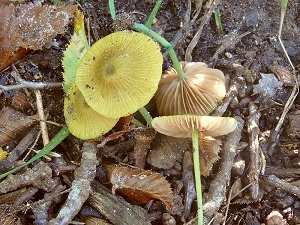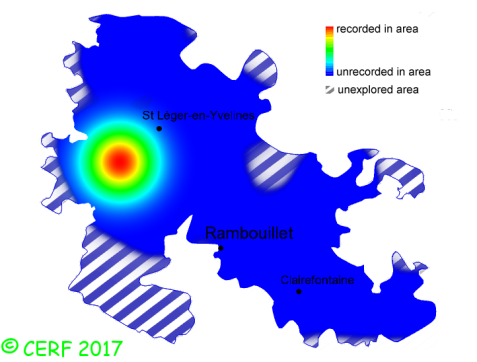| Entoloma incanum (Fr.:Fr.) Hesler |
|
|
|
|
|
|
The cap is yellow-brown to olive green brown . The cap surface is smooth, not viscid nor sticky. The stem is greenish yellow to bright yellow, without ring. The flesh is greenish, turning blue in the stem when creased; the odour is strong, of burnt corn or mouse droppings; its texture is fibrous. The gills are greenish white then pink, adnate, distant . The spore print is pink. This species is saprophytic. It grows on the ground, on a rather calcareous soil. The fruiting period takes place from July to December.
Chemical tests : none. Distinctive features : stem base with white down (mycelium); odour of mice; cap with very dark centre, depressed in its centre Entoloma incanum is rare and confined in the forest of Rambouillet, and is infrequent, more generally speaking . | ||
|
page updated on 14/01/18

